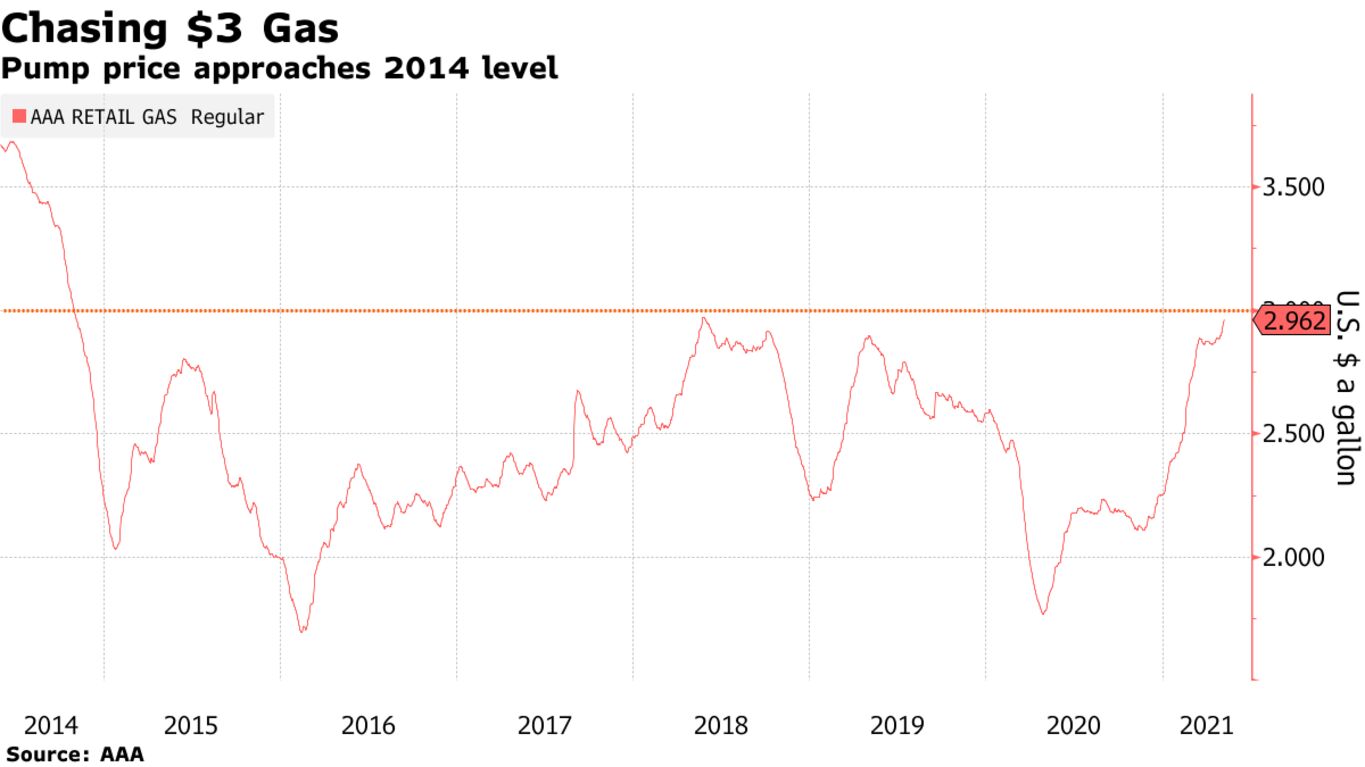U.S. gasoline prices may surge to their highest since 2014 even faster than previously expected as a cyberattack disrupts operations on the nation’s biggest oil fuel pipeline. The national average stood at $2.96 a gallon Friday, according to auto club AAA. With national gasoline inventories ample, the pump price wasn’t expected to tick much higher until Memorial Day at the end of May, which is traditionally viewed as the start of the U.S. summer driving season. Gasoline last bested the $3 average in October 2014.
Price increases in road fuel may stoke even more worries about inflation as commodities from oil to lumber to corn skyrocket with the world’s major economies emerging from pandemic restrictions. The oil industry was gearing up to meet what is expected to be a surge in fuel demand as newly vaccinated Americans take to the roadways and skies this summer. The downed Colonial Pipeline is a key artery for gasoline, diesel and jet fuel produced by oil refiners on the U.S. Gulf Coast and major metropolitan areas between Atlanta and New York.
To be certain, New York was well supplied with fuel ahead of the attack and could weather the upset if missing fuel is replaced or the line restarts quickly. East Coast gasoline stockpiles at the end of April were near five-year seasonal averages.
Colonial operates Line 1 for gasoline and Line 2 for diesel and jet fuel from Pasadena, Texas — less than 15 miles from some of the nation’s largest refineries — to Greensboro, North Carolina, at a combined 2.5 million barrels a day. They merge at Greensboro to feed a line carrying about 900,000 barrels a day into New York Harbor, and other East Coast pipelines.

